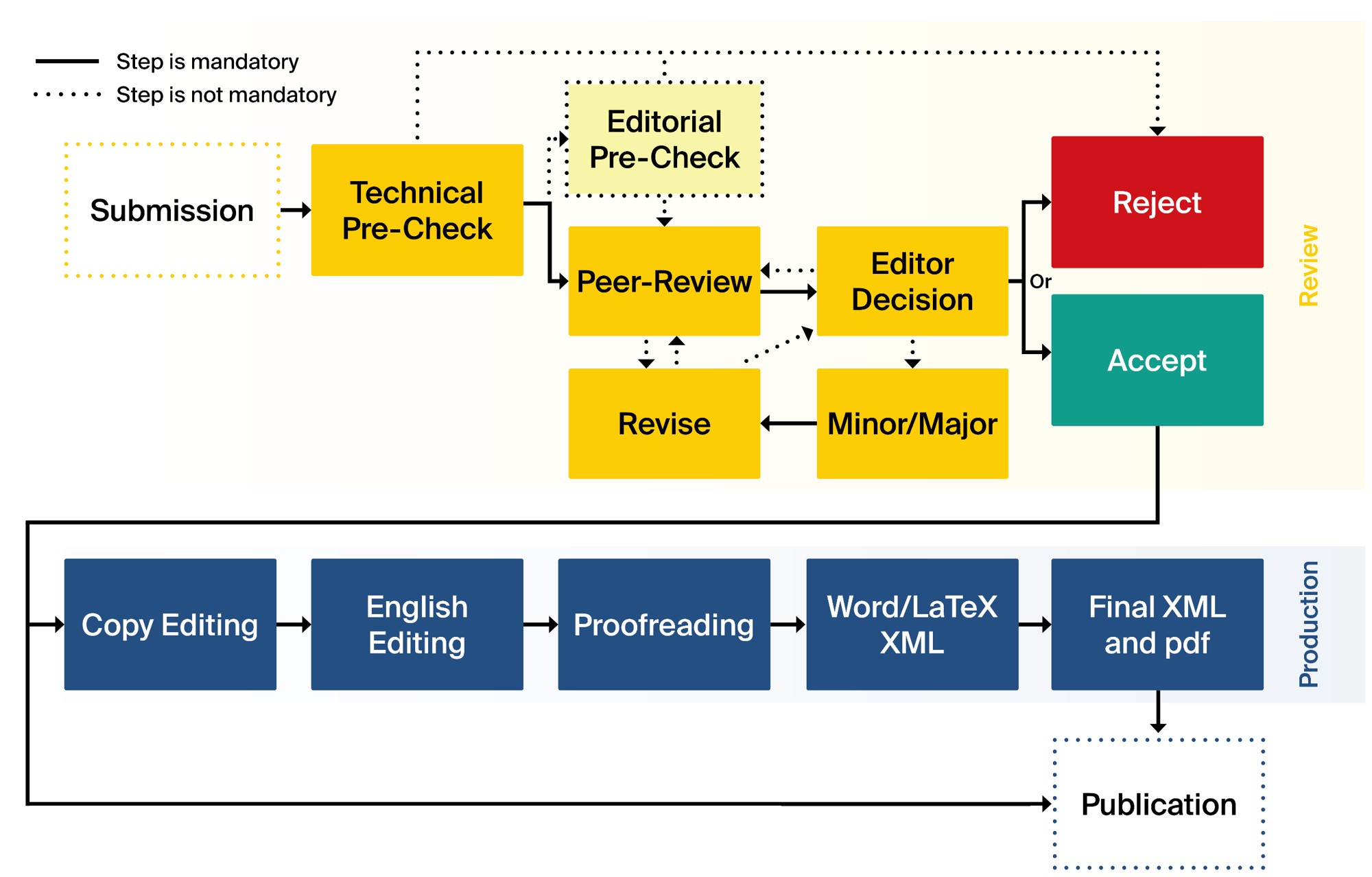
P-ISSN: 1025-9589
E-ISSN: 1819-2718
The editorial process of J Ayub Med Coll, Abbottabad is summarized in the following flow-chart:

Preliminary assessment:
Following the submission of research papers, the manuscript undergoes a preliminary pre-check. A member of the editorial board, usually the managing editor will access the manuscript for overall suitability, adherence to ethical research standards and ability to qualify for further review.
During this process, the soundness of the manuscript, relevance of the applied methodology and references cited in the manuscript will also be assessed. During pre-check, the editors have the authority to either forward it for peer review request revision before peer review or reject the manuscript.
Peer Review:
The details of the peer review process adopted by the J Ayub Med Coll are as follows:
The double-blind review process of peer review adopted by the Journal of Ayub Medical College Abbottabad requires an internal peer review of the submitted manuscripts. Most manuscripts found unsuitable for publication with reference to poor structure, writing or topic are rejected at this initial stage of peer review. Once a submitted manuscript is deemed fit for publication by the in-house review by peers, it will be reviewed by external reviewers. The only exception to this process is the editorials and obituaries authored by the chief editor, the Journal of Ayub Medical College, Abbottabad.
The journal also maintains a guideline for reviewers which is as follows:
To critically, yet constructively review and evaluate the manuscripts within the specified time. Review need to prepare necessary comments on the reviewers proforma. This evaluation encompasses the following important areas:
The reviewer comments on overall quality of the manuscript as well.
Reviewer responds to editors and give their final verdict in following ways:
Reviewers are required to declare to the editor any potential conflicts of interest with respect to
Manuscript.
It is the responsibility of the reviewer to keep the manuscript and its review confidential and not to show it or share it with anyone without the prior permission of the managing editor.
Rewarding reviewers.
• Each reviewer may be rewarded by being publicly thanked for reviewing in the journal each year and will be given free copies of the journal.
Revision:
Revisions of the manuscript can be requested from the authors either during the preliminary assessment of after the completion of the peer review process. The revised manuscript which is accepted for publication may be sent back to the authors for final proofreading.
Editor Decision:
The decision of acceptance of the manuscripts is taken by section editors or the managing editor, however, the case may be following the completion of the peer review process. The decision depends on the remarks of the reviewer’s nature of the revisions required and the overall quality of the paper. Once accepted authors are notified to deposit the fee and the paper may be sent to copy editing and further publication.

P-ISSN: 1025-9589
E-ISSN: 1819-2718
This work is licensed under CC BY-ND 4.0
Powered By: ConnectSmart
